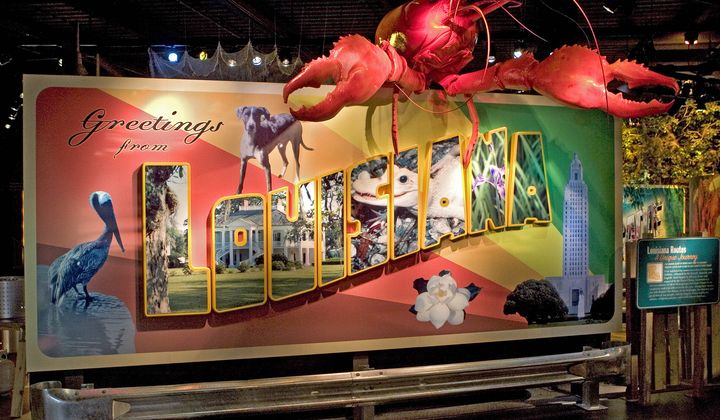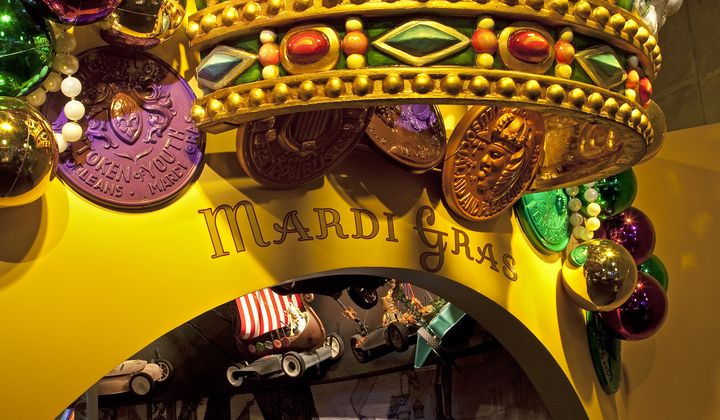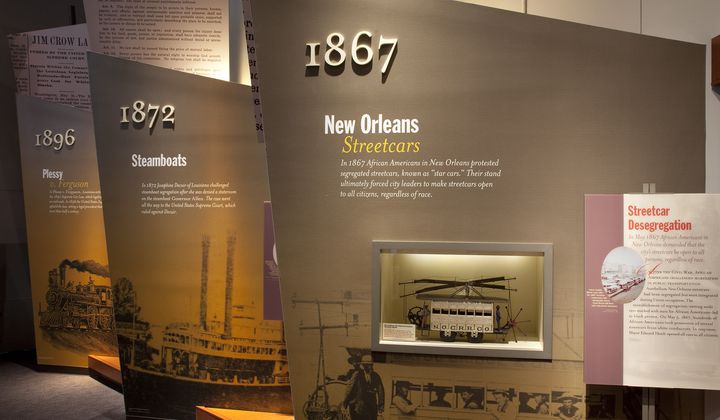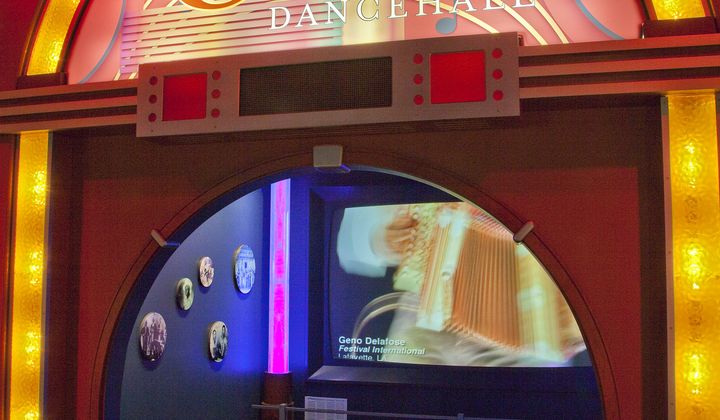Capitol Park Museum
660 N 4th St, Baton Rouge, LA 70802 - United States
From Louis Armstrong to Huey P. Long, from Mardi Gras to fais-do-do, and from the nation-building commerce of the Mississippi River to the life-sustaining bounty of the Gulf of Mexico, the Capitol Park Museum provides a panoramic exploration of the most vibrant state in America.
See how American Indians; colonists from France, Spain and Britain; enslaved Africans and Acadians from Nova Scotia—eventually known as Cajuns—populated and cultivated Louisiana, shaping it into one of the most culturally rich regions in the world. With thematic exhibits on diverse aspects of Louisiana history, industry and culture, the museum includes two permanent exhibits: Grounds for Greatness: Louisiana and the Nation and Experiencing Louisiana: Discovering the Soul of America.
A 48-foot wooden shrimp trawler and a two-row sugar cane harvester reveal by example the state’s agricultural and aquatic riches. An oil-well head and a scale model of a drilling rig drive home the critical role Louisiana plays in America’s energy industry. Exhibits also include a rare Civil War submarine and artifacts from steamboats, including trophy antlers won by the Robert E. Lee in the Great Steamboat Race of 1870.
Exhibits on slave markets, resistance, revolt and Jim Crow provide a glimpse into the unimaginable plight of people of color who, in the face of overwhelming hardship, contributed incalculably to the cultural fabric of the state. The museum re-creates the atmosphere of holding cells where slaves bound for the auction block were imprisoned to prevent escape. The exhibit includes the actual door from the Fairview Plantation jail for slaves. The fight for freedom is highlighted in a display on the Baton Rouge bus boycott of 1953, which made national headlines and inspired civil rights leaders throughout the South.
Louisiana offers much to the musical history of the nation as a whole, and many of those vital contributions are on display. See eclectic exhibits on the state’s music and musicians, including Buddy Guy’s polka dot Stratocaster guitar, Clifton Chenier’s Grammy award and, in the expansive Louis Armstrong exhibit, the bugle “Pops” played as a boy at the Colored Waif’s Home, where he received his first formal music instruction. In the interactive music exhibits, hear the distinctive southwest Louisiana sounds of Cajun, zydeco and swamp pop, Baton Rouge blues and world-famous New Orleans jazz.
The Capitol Park Museum tells a story of passion, adventure and discovery that could have happened only in the Bayou State. Come explore a way of life like no other.
Exhibits
Born on December 19, 1918, in Bogalusa, Louisiana, Professor Longhair’s influence on New Orleans music is incalculable. His rhythms and riffs influenced countless people who made music in New Orleans and abroad. His lyrics portrayed unique characters and situations that seem to happen only in New Orleans. His vocal style sounded almost out of control and unhinged, like a party about to get really out of hand.
In the words of the exhibit’s curator, David Kunian, “Professor Longhair was the baddest. All pianists in New Orleans and beyond bow down to his feet, worship at his altar, smoke his peace pipe, eat his gumbo, and see his Zulu Queen on Rampart and Dumaine.”
Showcasing all things Fess, the exhibition explores the musician’s early life and development, first hits (including “Tipitina,” “Mardi Gras in New Orleans,” and “Big Chief”), 1970s comeback, untimely death, and musical legacy. Kunian, music curator at the New Orleans Jazz Museum, created the exhibition to commemorate the centennial of Professor Longhair’s birth in 2018.
Participation in Museum Day is open to any tax-exempt or governmental museum or cultural venue on a voluntary basis. Smithsonian magazine encourages museum visitation, but is not responsible for and does not endorse the content of the participating museums and cultural venues, and does not subsidize museums that participate.





